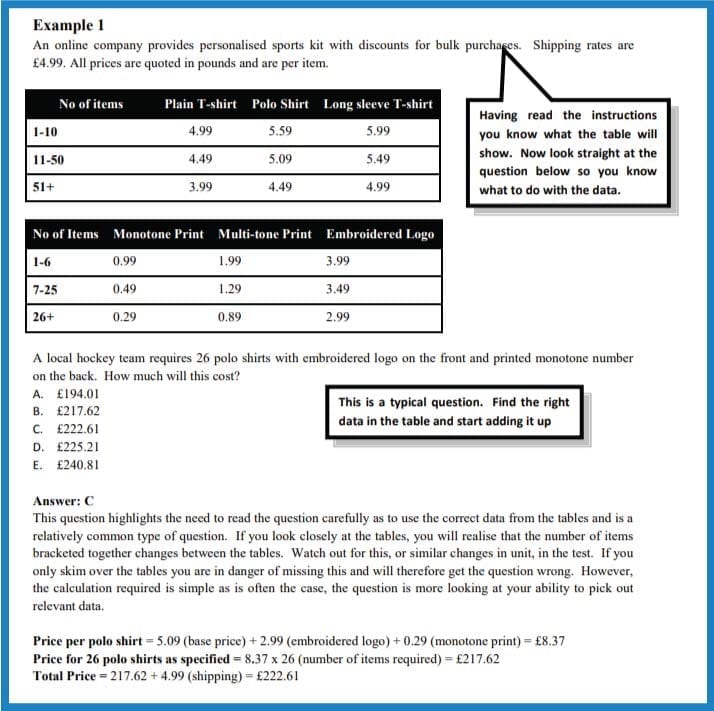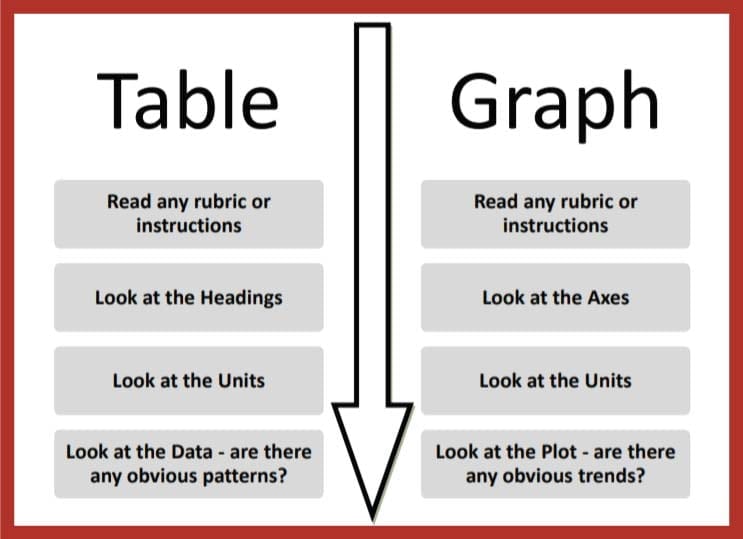UCAT Quantitative Reasoning
36 questions | 24 minutes
The UCAT Quantitative Reasoning section tests your ability to quickly interpret data and perform relevant calculations upon them.
Section 3 contains 36 questions and you have 24 minutes to answer them, giving a total of 40 seconds per question – slightly more generous than the verbal reasoning section. As with all sections, in the UCAT quantitative reasoning section you have one additional minute to read the instructions at the start. There are different types of questions you can be asked in Quantitative Reasoning, but all involve interpreting numerical data. This section is all about testing your natural ability with numbers, how easily you understand numbers and how well you can make calculations based upon new data.
What does a UCAT Quantitative Reasoning question look like?
This is an example question, along with a worked solution so you can see the question and answer process.

How to prepare for Quantitative Reasoning
- Practice common question styles
Be especially comfortable with things like bus and rail timetables, sales figures, surveys, converting units an working with percentage changes in both directions. These are commonplace in the UCAT so could prove awkward if you’re rusty. Likewise be sharp on your simple arithmetic – it might seem basic, but a good knowledge of times tables will save you a lot of time.
- Familiarise yourself with the format of diagrams
When looking at an unfamiliar diagram, a clear approach will help you quickly grasp what it shows. Candidates who let the time pressure stop them from properly interpreting the data are much more likely to lose marks. Avoid this common pitfall by following our approach below to quickly read complex data.

- Get comfortable using the on-screen calculator
It’s important to know exactly how the on-screen calculator works to use it effectively during the test. Make sure you know what functions it has and doesn’t have. Practice using the calculator before test day so you don’t waste any time learning it on the day. You can do this on the UK’s UCAT website (the test is exactly the same).
- Mental maths
The main challenge in most questions is finding the right data and selecting the appropriate calculation to perform, rather than the actual calculation itself. However, time is tight so you should be confident with addition, subtraction, multiplication, division, as well as working out percentages, fractions and ratios. Although there is a calculator, some arithmetic is better off done in your head.
Answering questions
- Estimation
Estimation can be a very useful skill, particularly when the answers are significantly different. If the answers are very different to each other then a rough estimation can actually give you the correct answer. Also make a mental note of what you expect the answer to be when you use the calculator because it can be easy to slip up!
- Flagging for review
Flagging questions is always a useful tool. If the question is difficult and is taking too long to solve, guesstimate an answer, flag the question and move on! This way if you don’t have time to come back to it then you still have an answer put down.
- Pace yourself
In this section you have an average of 40 seconds per question, and this is a very useful guide to have. Of course some questions will take more or less time, but you should aim to work steadily forwards at roughly that pace. So after 6 minutes you should be about 9 questions in, and after 12 minutes should have completed about 18 questions and so on.
After the most comprehensive package to help you every step of the way?
[/vc_column_text][vc_empty_space height=”35px”][vc_single_image image=”136473″ img_size=”large” alignment=”center” onclick=”custom_link” link=”https://www.uniadmissions.com.au/ucat-tuition/”][vc_empty_space height=”35px”][/vc_column][/vc_row][vc_row][vc_column][vc_column_text]
Practice is the key to getting the best UCAT score you can get!
Get the very best practice tips, questions and advice, along with 10 hours of lectures with our online course.
GET INSTANT ACCESS TO THE ONLINE COURSE









